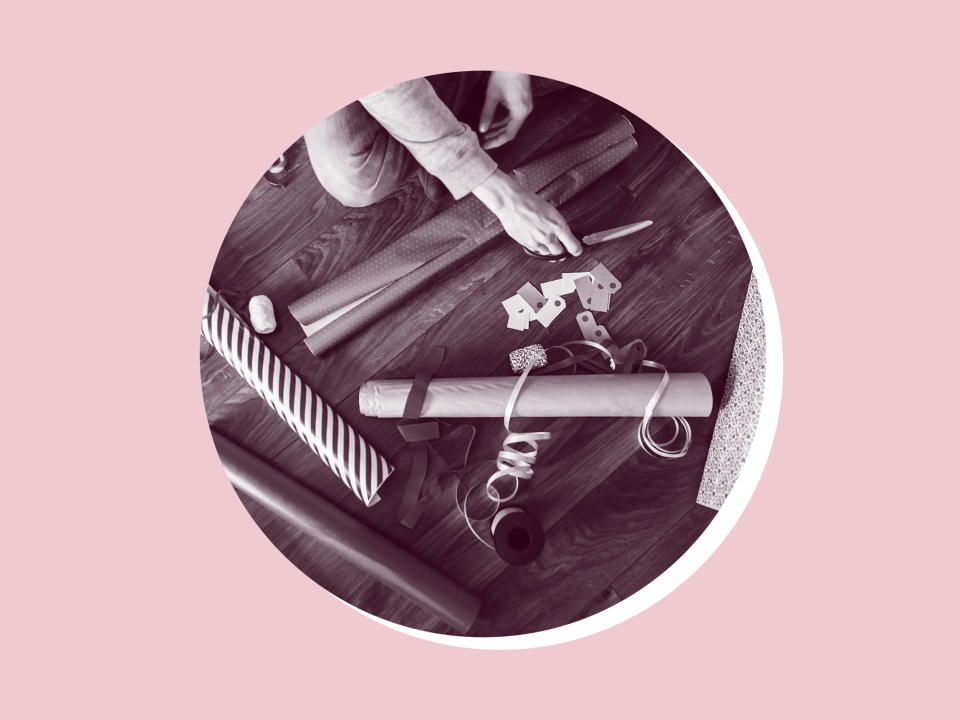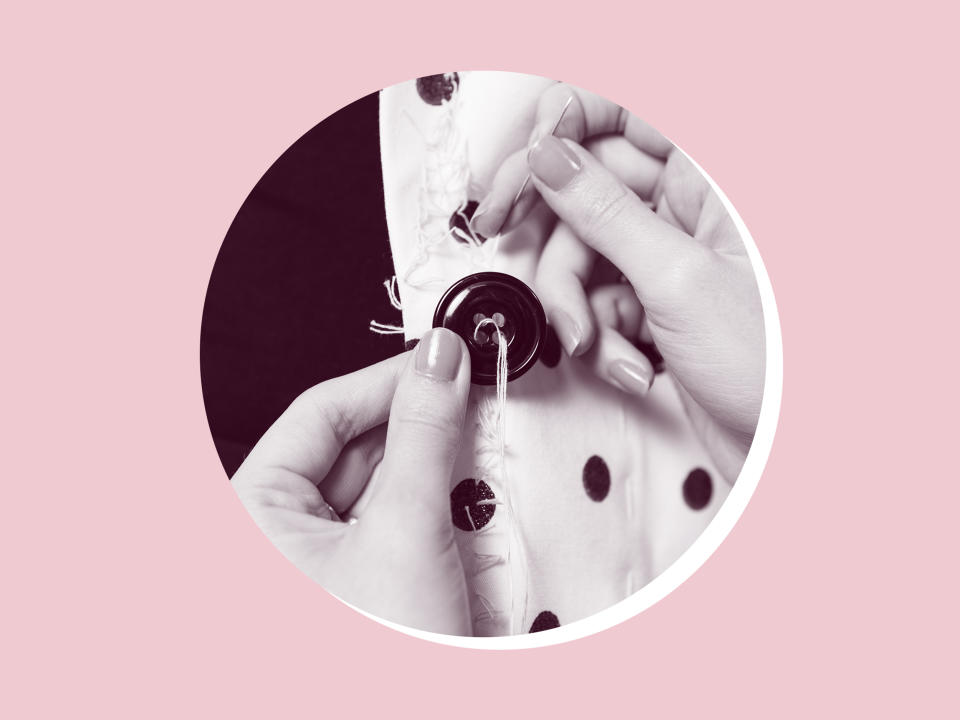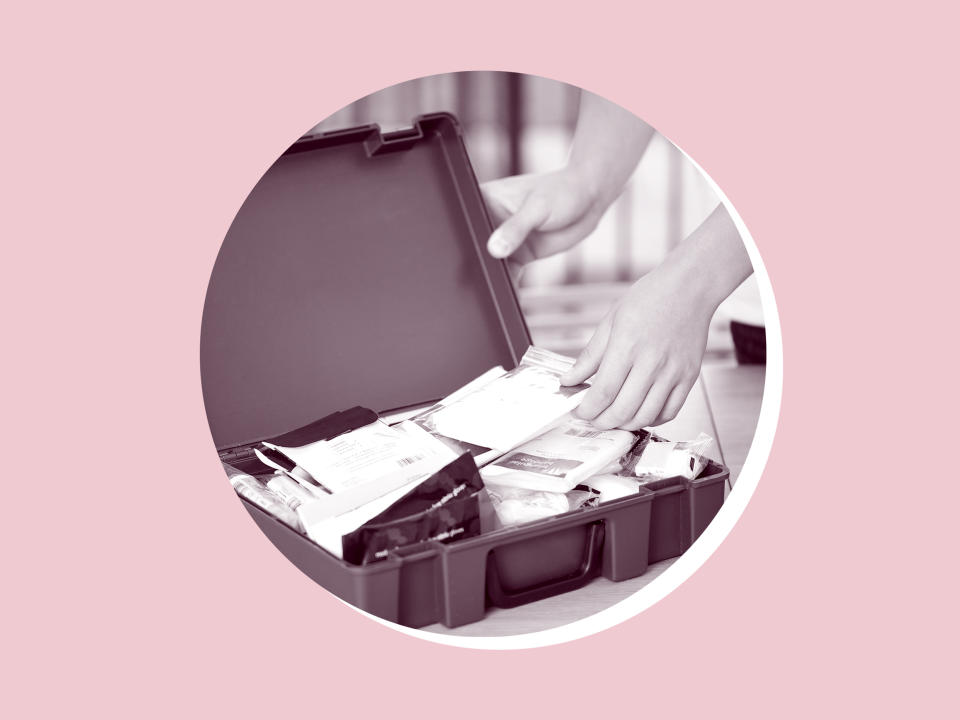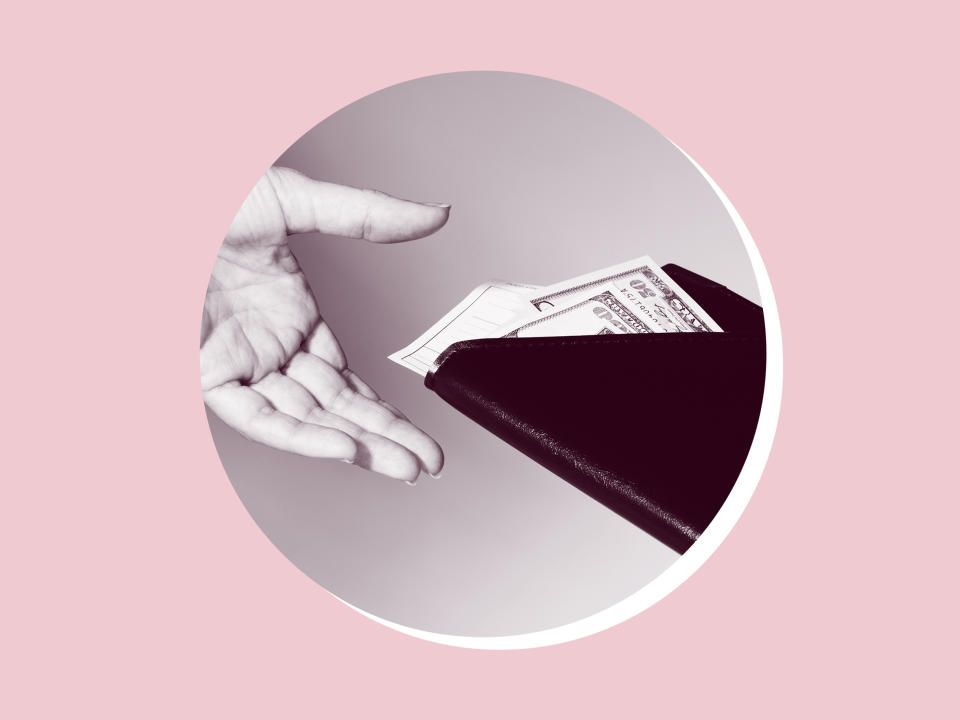10 adulting skills you weren't taught in school — and how to do them
School taught us a lot of things — like how to calculate the standard deviation or diagram sentences — but those won't come in handy when you’ve got a flat tire or need to whip up a delicious dinner for a group.
There are certain adult life skills that just aren't taught in school. That’s why TMRW put together a list of some of the most important life skills for adults that weren’t part of the school curriculum, but that you should be familiar with and know how to do.
Skills in life that you need as an adult:
How to change a tire
How to wrap a present
How to sew a button
How to do first aid
How to iron a shirt
How to use a fire extinguisher
How to unclog a toilet
How to calculate a tip
How to make a signature dish
How to write a thank you note
1. How to change a tire

If you ever drive a car, this is an important skill to have. While roadside assistance might be available, it could take a while for someone to come and help. And if you’re already prepared with the tools you need, changing a tire can be a quick and easy process that can help you get on your way.
Keep a spare tire, jack and lug wrench in your trunk at all times. Learn the steps (see a photo tutorial here) and practice them a couple of times at home so that you’ll feel comfortable with the process when an emergency arises.
2. How to wrap a present

Do you always opt for the gift bag when you’re giving a present? If your gift-wrapping skills need a little finesse, it's time to learn how to do it like the pros. And, best of all, it can take about the same amount of time as it does to fluff up tissue paper.
There are different techniques when it comes to wrapping a present, but one hack went viral, showing how to wrap a rectangular box in only 15 seconds.
3. How to sew a button

If your favorite top or coat loses a button, that doesn’t mean it’s the end of its wear. Sewing a button back on is easy once you know how to do it. Grab 2 feet of thread, a needle, scissors and your button, and follow these steps:
Thread the needle and knot the ends of the thread together, trimming any excess.
Mark your button's future location by dotting the target with chalk.
Push your needle through the back of the fabric to the front, pulling the thread all the way through. Slide your button down the thread to meet the fabric.
Line up the holes with those of the other buttons on your garment and push your needle through another hole, either diagonal or adjacent, and out the back of the fabric. Repeat four times, pulling the thread tight enough so your button doesn't dangle but loose enough so the fabric doesn't pucker. If you have a four-hole button, switch hole pairs from the back and repeat.
Finish by pushing the needle up through the back of the fabric to the front but not through any buttonholes. Find the shank, which is the thread between the button and the fabric, and wrap this excess length tightly around it.
Pass your needle through the shank twice and snip the thread. No need to knot; the button is secure. Now you're ready to get dressed and look snazzy. Button up with pride!
4. How to do first aid

Scary emergencies can happen in an instant, so it’s important to be familiar and trained in life-saving skills. Look for first aid and CPR classes in your area that you can take. You can also check out this helpful resource guide to be prepared.
5. How to iron a shirt

A wrinkled shirt can ruin your whole outfit (and maybe even your day), but if you’re skilled in ironing, you can nip the problem in the bud. You just need an ironing board, an iron and, if you want to try this clever trick to reduce the time it takes, you’ll need tin foil, too.
6. How to use a fire extinguisher

A fire can come out of nowhere, so it’s good to be prepared beforehand. Have a fire extinguisher in your home (preferably in your kitchen since that’s where most house fires start) and be familiar with how to use it.
Remember the acronym PASS:
Pull the pin
Aim
Squeeze
Sweep from left to right until the fire is out.
See more fire safety tips here.
7. How to unclog a toilet

It’s one of those things that might happen at your home or — heaven forbid — while you’re at someone’s else’s house. For starters, if the water looks like it's heading for the rim, shut off the water valve behind the toilet by turning the knob to the right. ("Righty, tighty. Lefty, loosey" is the plumber's mantra.)
And then all you need is a plunger and the know-how to use it. Here’s a handy guide to unclogging a toilet and sink.
8. How to calculate a proper tip

Showing gratitude for those who serve you, whether it be a restaurant delivery person or hairstylist, is so important, and you want to make sure you’re giving the appropriate amount. Familiarize yourself with proper tip amounts for different services like nail salons and movers. And if you draw a blank, 15-20% is a good range (although you may consider leaving more, especially during pandemic times).
9. How to make a signature dish

It’s the recipe you know by heart and have perfected thanks to the many times you’ve made it. Your friends and family always request it at potluck dinners or picnics. Simply choose a recipe, perhaps passed down from generations in your family, and tweak it over time to make it your own. Don’t have any good options? Steal Hoda Kotb’s three-step fish dish or Jenna Bush Hager’s queso dip.
10. How to write a thank you note

The power of a thank you note goes a long way, whether it’s showing appreciation for something someone has given or done for you or expressing gratitude after a job interview. Invest in a set of nice note cards and know the right words to say. Here’s a helpful guide for when you’re ready to put pen to paper:
1. Acknowledge the giver.
Aside from beginning your note “Dear Uncle Robert” you should mention how grateful you are for the giver’s effort and generosity.
"Dear Uncle Robert, You always seem to get me exactly what I need!"
2. Keep it simple and specific.
Don’t get too flowery or general with your prose. Acknowledge a gift directly by saying “thank you so much for the ______.” It is good to state early on what you are thanking someone for that way you connect the gift with the giver.
If you were given money, do not list the exact amount instead write “thank for the check.”
"Thank you so much for the new red sweater."
3. Discuss when you'll use it.
Let the giver know how you will use the gift and say something nice about how the gift has impacted your life.
If you like the gift then this should be easy to do, but if you hate it then try to find some redeeming attribute that you can mention — just don’t go overboard.
If you were given money then tell the giver how you plan to use it.
"The color is so cheerful and it will certainly keep me warm this winter."
4. Link it to a specific time.
You should always end a note with a mention of seeing the giver in the past or future.
For example, “It was great to see you the other night at dinner. I hope we can do it again soon!” This will link the giver to you and acknowledge your past, present, and future relationship.
"I loved seeing you at Christmas and I am looking forward to your visiting us this spring."
5. Don’t blab.
Thank you notes are meant to show your gratitude for someone else’s kindness.
They are not the place to discuss what’s going on in your life — save it for an email or phone call.
6. End with love.
Or end with any salutation that you feel comfortable with but make sure you sign the note clearly. There is nothing worse than getting a note and not knowing whom it’s from.
"With love and best wishes, Name"
